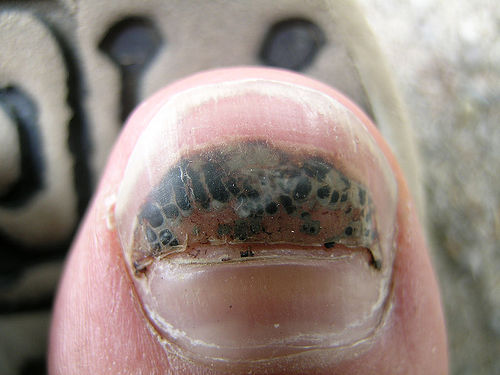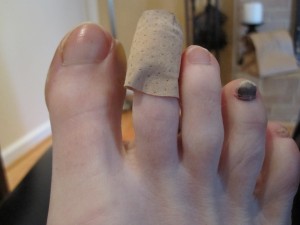The Tarhumara and Masai Part 2
Setting things straight: MBT (Masai Barefoot Technology) Shoes: Are they really “the Anti-shoe” ?
In the past, many of you have read our articles and opinions on barefoot walking and running As time has gone on you have seen the results of the work we have done for Vibram on their product the Five Fingers (http://www.vibramfivefingers.com/technology/faqs_board.cfm). This Vibram device is the closest to true barefoot walking or running. There are now products in the stores such as the Nike Free and the MBT shoe that over the last few years are gaining popularity. Our job, as we see it, is to report the facts, so here they are.
In 2008 in Outside magazine there appeared an ad for the MBT shoes claiming they are the “anti-shoe, anti-boot, anti-sandal etc”. They imply on their training videos, website and advertisements that this shoe improves posture, protects your knees and tones your muscles, apparently from just standing in them. We think this must be a pretty amazing shoe if it can do all that! However, if your radar is up and working, you should be asking some hard questions before you spend over $230 for a pair of shoes that challenge you each moment not to roll your ankle in the parking lot outside the very store you bought them in. And now, they are available in similar form from Sketchers as “Shape Up’s”, usually for under $100. We say…save your money and invest it in something else, unless you are one of the select few that could benefit from this technology.
Here are some of our major concerns, questions and reasoning for our harsh but sound skepticism.
If you pick up this rather hefty shoe you will notice two things immediately, both of which have concerns. First, the shoe has a rigid last, meaning the shoe does not bend. It has a beveled bottom design called a rocker designed to rock on the ground both forward and backward like a rocking chair. We think Perry put it best: progression of gait over the supporting foot depends on 3 functional rockers.
heel rocker: the heel is the fulcrum as the foot rolls into plantar flexion. The pretibial muscles eccentrically contract to decelerate the foot drop and pull the tibia forward.
ankle rocker: the ankle is the fulcrum and the tibia rolls forward due to forward momentum. The soleus eccentrically contracts to decelerate the forward progression of the tibia over the talus. Ankle and forefoot rocker can be compromised by imbalances in strength and length of the gastroc/soleus group and anterior compartment muscles.
forefoot rocker: tibial progression continues and the gastroc/soleus groups contract to decelerate the rate of forward limb movement. This, along with forward momentum, passive tension in the posterior compartment muscles, active contraction of the posterior compartment and the windlass effect of the plantar fascia results in heel lift.
This shoe takes away from the 3 natural rockers of the foot and means that the foot is not required to do much work other than stand on the platform and let the shoe do the work. In essence, taking it to an extreme, this shoe is really no different than the rocker boot (CAM walker) you might wear on your foot after a fracture, foot surgery or if you have a Hallux rigidus. They are designed to limit mechanical forces traveling through the foot by making the foot quiet, protected and unchallenged by external forces. The rocker boots are designed to reduce heel impact load, and thus induce a more gently rockered mid-foot impact loading, “softening” pronation, which reduces force into the foot. The MBT, at least according to 1 study, lessens heel strike pressure by 11%, but it also diminishes midfoot pressures by 21% and increased forefoot pressures by 76% ! If there is a forefoot deformity, such as a vlagus or varus, this may actualy accentuate pathology, since you are in essence limiting pronation, one of the shock absorbing mechanisms of the foot.
As the studies cite, we agree that they are altering muscle forces through the foot, but is this a good biomechanical change for the the particular foot or foot type involved and should not depend on a shoe to do it for you. More importantly, these changes may have a concerning detrimental side effect; the rigidity of the shoe’s last and its rocker will, in time we believe, weaken the foot intrinsics which are critical for joint protection and stability. The best example we can give are the progressive deformities of hammer toes, bunions and “falling arches” all that result from progressive weakening of the foot intrinsics . This works on the principle of “if you don’t use it, you lose it”.
The second thing you will notice when you pick up an MBT shoe is that the heel “crash zone” (the area that is first impacted at heel strike) is filled with an exceptionally spongy EVA foam, almost as soft as a wet sponge. This “crash zone” is extensive and reaches all the way into the beginning of the mid-foot impact zone. Being the shoe nerds that we are, we can say with confidence that we have never see a shoe with such a soft and expansive rear heel crash zone (not even the Nike Cesium’s (of several years ago) crash zone can compete with this MBT heel zone… and that is saying alot). From what we can tell, this aspect of the MBT shoe was designed to reduce heel strike weight bearing which has some merits, albeit few, particularly in running. When walking, by avoiding heel strike, you are forced to shorten your stride, keep your body mass over the feet and hence reduce the challenges on the pelvis and core in the sagittal plane (these are some of the postural benefits that the shoe claims).
The Masai tribesman (whom the shoe is apparently named after) are a pastoral people who are herders and walk long distances. They ARE NOT runners and often wear simple sandals adorned with beads or sometimes, go barefoot.
If one walks or runs in shoes with a traditional “heel strike” type gait, the cushioning of the EVA heel sole affords a pillow effect, enabling one to “stride out” and achieve heel strike. This is an undesirable trait. At heel strike, there is a deceleration moment of your body mass, this means a shear force on the ground which is why your brain will not allow you to barefoot heel strike when running on a hard, rough surface.
So the question remains: Is the MBT shoe really promoting barefoot biomechanics or is it just using the exceptionally spongy rear crash zone of the shoe which help one to avoid heel strike ? We think the latter. Forcing someone to avoid heel impact/strike naturally forces you to make contact at mid-foot or forefoot (the latter which is bad). For the most part, a midfoot strike is desirable if you have the core stability to withstand this sudden change in gait and posture. Do you really need an expensive shoe to force you to do that when you can make that conscious choice on your own ?
Posture is earned, not forced. Putting a cervical collar around your neck does not earn you posture, it borrows that posture from an external device. The MBT shoes does much the same.
On a positive note, a good use for the MBT shoe is for persons suffering from big toe pain from anatomic (as opposed to functioal), Hallux rigidus/limitus (aka. turf toe) People with limited dorsiflexion of the 1st mmetatarsal-phalangeal joint do well in this shoe since the last of the shoe is rigid and rockered; so the toe does not bend and this reduces pain at the joint. Because of its mass and size, it also makes an excellent doorstop.
The bottom line, if you want to walk or run barefoot, you want to mico-progress into a more minimalistic shoe that bends and gives to motion rather than one which restricts or induces any motion. If trained properly (and there is an exercise progression for the feet, which is specific for each individual) many feet can become stronger and more competent and necessitate less of a shoe. In our experience, inhibiting joint motion and muscular functions over time leads to bigger muscular incompetences, weaknesses and problems that foot intrinsic weaknesses have been known to lead to such as bunions, hammer and claw toes, neuromas and the like.
Parts of this article are from an article we wrote years ago when the MBT’s first became available. As far as we know, we were one of the first on the block to write about them and the above issues. Tomorrow we hope to dig up our podcast we did back then, regarding some of these and other issues….. a little blast from the past, with still great relevance today.
We remain….The Gait Guys…Telling it like it is….


































